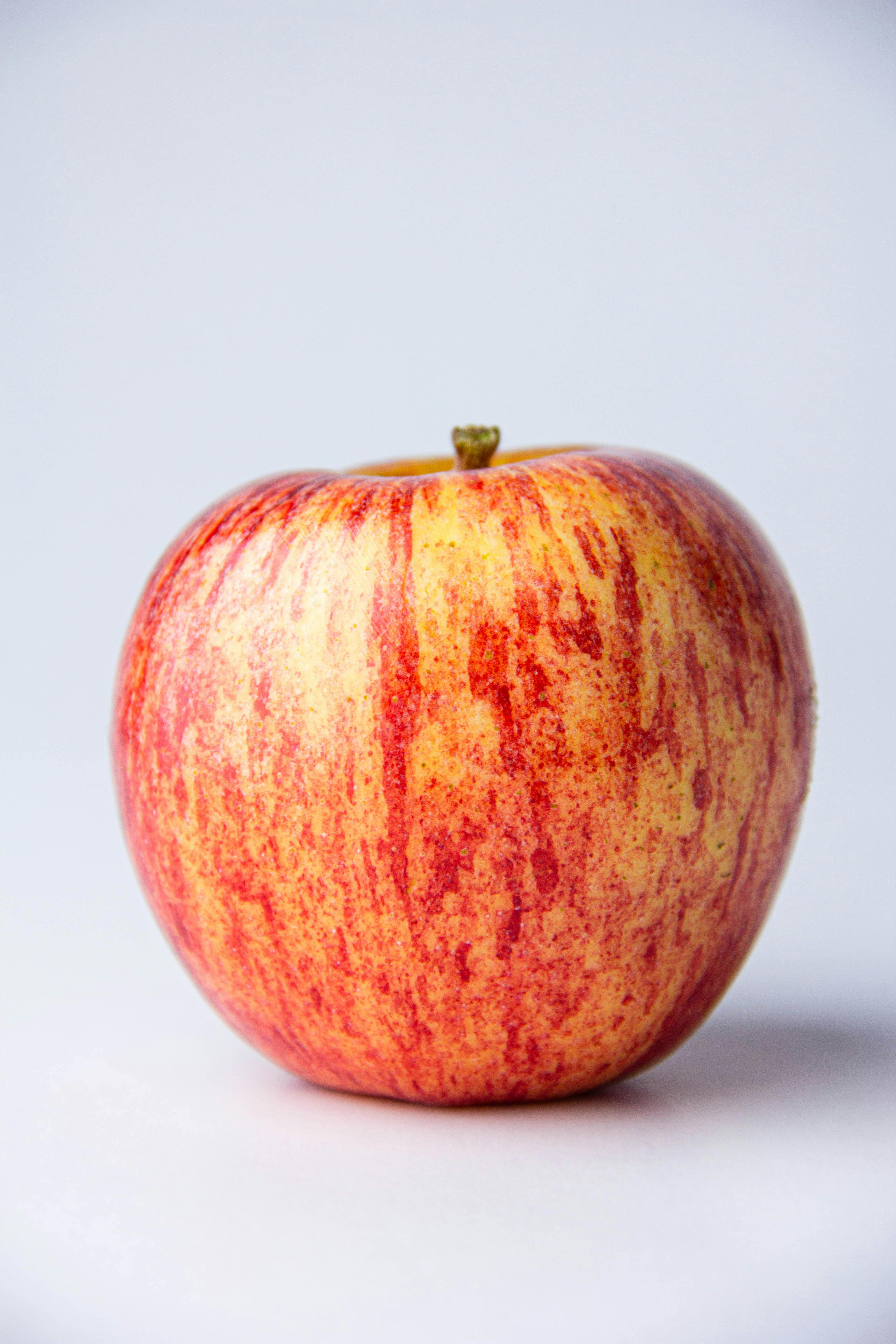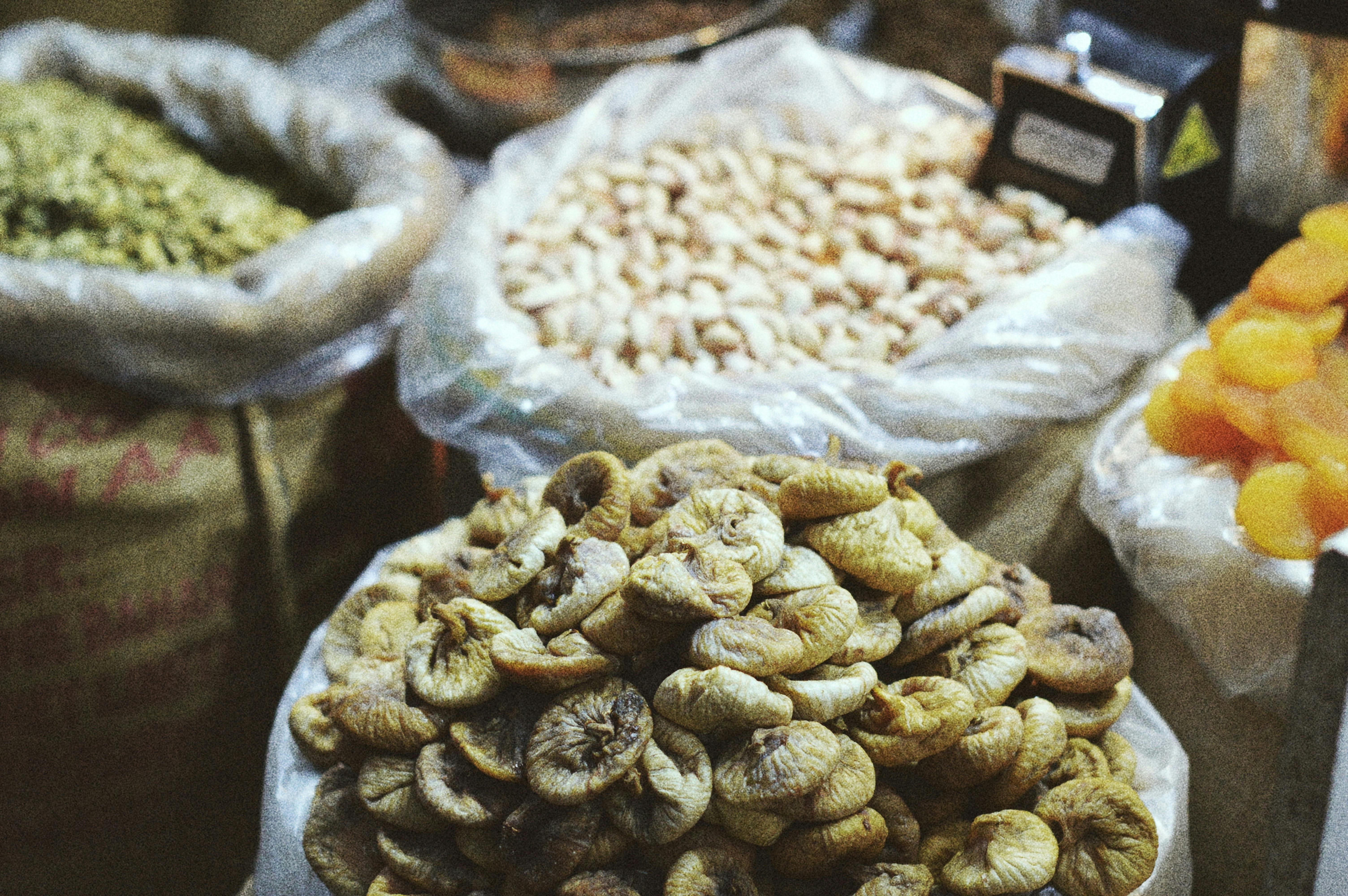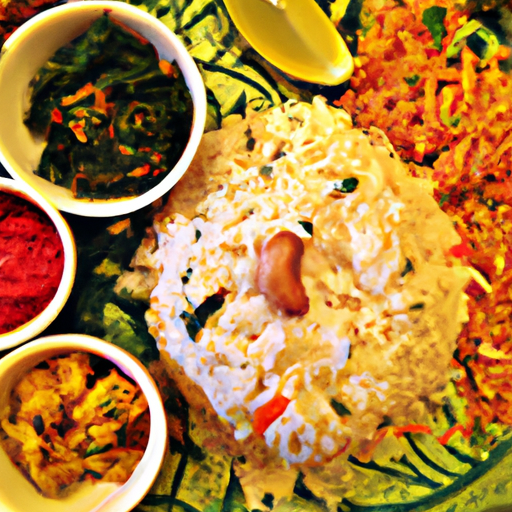Ayurvedic Nutrition: Cooking For Your Dosha is a fascinating exploration into the world of Ayurveda, an ancient system of medicine originating from India. In this article, we will uncover the secrets of Ayurvedic nutrition and how it can enhance our overall well-being. With a focus on understanding our unique dosha, or body constitution, we will discover how to create a balanced and nourishing diet tailored to our individual needs. Prepare to embark on a journey of self-discovery and learn how to cook in harmony with your dosha for optimal health and vitality.

Understanding Ayurvedic Nutrition
The basics of Ayurveda
Ayurveda is an ancient system of medicine that originated in India thousands of years ago. It focuses on achieving balance and harmony in the body, mind, and spirit to promote overall health and well-being. One of the key aspects of Ayurveda is nutrition, which plays a vital role in maintaining this balance. Ayurvedic nutrition emphasizes the use of whole, unprocessed foods and specific cooking techniques to support each individual’s unique constitution.
The concept of Doshas
According to Ayurveda, every individual has a unique combination of three fundamental energies called Doshas: Vata, Pitta, and Kapha. These Doshas govern various functions in our bodies and determine our physical, mental, and emotional characteristics. Understanding our dominant Dosha(s) can help us make informed choices about our diet and lifestyle to maintain optimal health.
The importance of balancing Doshas through nutrition
In Ayurveda, it is believed that health is achieved when the Doshas are in a state of balance. When the Doshas are imbalanced, it can lead to various health issues. Nutrition plays a crucial role in balancing the Doshas by providing the right types of foods and flavors that can either pacify or aggravate each Dosha. By following a personalized Ayurvedic diet that caters to our individual constitution, we can promote well-being and prevent imbalances.
Discovering Your Dosha
Introduction to Vata, Pitta, and Kapha
Vata, Pitta, and Kapha are the three Doshas in Ayurveda, and each Dosha is associated with specific elements and qualities. Vata is related to the air and space elements and is characterized by qualities like dryness, coldness, and movement. Pitta is associated with the fire and water elements and embodies qualities such as heat, sharpness, and intensity. Kapha is connected to the water and earth elements and is characterized by qualities like heaviness, coolness, and stability.
Identifying your dominant Dosha
To identify your dominant Dosha, you can consult with an Ayurvedic practitioner or take online quizzes that assess your physical and psychological characteristics. These assessments will consider factors such as body type, digestion, energy levels, emotions, and sleep patterns, among others. By understanding your dominant Dosha, you can make more tailored choices in your diet and lifestyle to maintain balance and harmony.
Understanding the characteristics of each Dosha
Each Dosha has specific characteristics that define its nature and influence on our bodies. Vata individuals tend to have a slender frame, dry skin, and irregular digestion. They are often creative, enthusiastic, and prone to anxiety. Pitta individuals typically have a medium build, fair skin, and strong digestion. They are often organized, ambitious, and prone to anger or irritability. Kapha individuals are usually larger in size, with smooth and soft skin. They have a slow metabolism, calm temperament, and can be prone to lethargy and attachment. Understanding these characteristics can help us adapt our nutrition to balance and support our unique constitution.

Cooking for Vata Dosha
Overview of Vata Dosha
Vata Dosha is associated with the air and space elements. It governs movements in the body, including breathing, circulation, and nerve impulses. When Vata Dosha is imbalanced, individuals may experience symptoms such as dry skin, constipation, anxiety, and insomnia. To balance Vata Dosha through nutrition, it is important to include foods that are grounding, warming, and nourishing.
Foods to pacify Vata Dosha
To pacify Vata Dosha, incorporate foods that are moist, oily, and warm into your diet. Opt for cooked rather than raw foods, as they are easier to digest. Choose nourishing grains like rice and quinoa, and include healthy fats like ghee, olive oil, and sesame oil. Veggies such as carrots, sweet potatoes, and beets are beneficial for balancing Vata. It is also recommended to consume warm, cooked fruits and small amounts of nuts and seeds.
Cooking techniques for Vata Dosha
When cooking for Vata Dosha, it is beneficial to use moist cooking methods such as steaming, stewing, or sautéing. These methods help retain moisture and make the food easier to digest. Warm spices like cinnamon, ginger, and cardamom can be added to enhance digestion and improve the overall Vata balance. It is also important to maintain a regular eating schedule and avoid skipping meals to keep Vata Dosha in check.
Sample recipes for Vata Dosha
- Creamy Butternut Squash Soup: This warming soup combines butternut squash, coconut milk, and grounding spices like cinnamon and nutmeg.
- Vata Balancing Kitchari: Kitchari is a traditional Ayurvedic dish made with rice, mung beans, and easily digestible spices like cumin and turmeric. It provides nourishment and supports Vata balance.
- Roasted Root Vegetables with Herbs: Roasting root vegetables like carrots, parsnips, and sweet potatoes with herbs like rosemary and thyme creates a comforting and grounding dish for Vata individuals.
Cooking for Pitta Dosha
Overview of Pitta Dosha
Pitta Dosha is associated with the fire and water elements. It governs digestion, metabolism, and body temperature. Imbalances in Pitta Dosha may manifest as inflammation, heartburn, skin rashes, or irritability. To balance Pitta Dosha through nutrition, it is important to include cooling, hydrating, and calming foods.
Foods to pacify Pitta Dosha
To pacify Pitta Dosha, opt for foods that have a cooling and hydrating effect on the body. Include sweet and juicy fruits like melons, grapes, and pears, along with cooling vegetables such as cucumbers, zucchinis, and green leafy vegetables. Lean proteins like chicken, turkey, and seafood can be included in moderation. Grains like basmati rice and oats, along with cooling fats like coconut oil and avocado, are beneficial for Pitta individuals.
Cooking techniques for Pitta Dosha
When cooking for Pitta Dosha, favor cooking methods that are gentle and cooling, such as steaming, boiling, or lightly sautéing. Avoid or minimize the use of heating spices like chili peppers and opt for cooling spices like coriander, fennel, and cilantro. It is helpful to avoid deep-fried foods and opt for lighter preparations to support Pitta balance.
Sample recipes for Pitta Dosha
- Fennel and Cucumber Salad: This refreshing salad combines thinly sliced fennel, sliced cucumbers, fresh herbs, and a light lemon dressing. It provides a cooling and hydrating effect for Pitta individuals.
- Quinoa Pilaf with Roasted Vegetables: A combination of fluffy quinoa, roasted vegetables like asparagus and bell peppers, and cooling herbs like mint and parsley make this dish balancing for Pitta Dosha.
- Cooling Coconut Curry: A coconut milk-based curry with vegetables like zucchini, cauliflower, and broccoli, along with cooling spices like coriander and turmeric, is a delicious and balancing option for Pitta individuals.

Cooking for Kapha Dosha
Overview of Kapha Dosha
Kapha Dosha is associated with the water and earth elements. It governs structure and stability in the body and influences aspects like weight, lubrication, and immune function. When Kapha Dosha is imbalanced, individuals may experience symptoms such as weight gain, congestion, lethargy, and depression. To balance Kapha Dosha through nutrition, it is important to include foods that are stimulating, light, and warming.
Foods to pacify Kapha Dosha
To pacify Kapha Dosha, focus on incorporating foods that are light, dry, and warming into your diet. Opt for bitter, astringent, and pungent tastes, as these help counter the heavy and dense qualities of Kapha Dosha. Choose lighter grains like millet and barley, and favor beans like lentils and split peas. Include a variety of vegetables, especially those with a stimulating effect like radishes, celery, and bell peppers. Spices like ginger, black pepper, and cinnamon are beneficial for stimulating digestion and balancing Kapha.
Cooking techniques for Kapha Dosha
When cooking for Kapha Dosha, favor cooking methods that are light and stimulating, such as baking, grilling, or using minimal oil. Avoid heavy, fried, or excessively oily dishes. To enhance the warming quality of Kapha-balancing meals, include spices like mustard seeds, cayenne pepper, and turmeric. It is helpful to maintain regular exercise and physical activity to support Kapha balance.
Sample recipes for Kapha Dosha
- Roasted Brussels Sprouts with Spicy Mustard: Roasting Brussels sprouts with a touch of mustard seeds, chili flakes, and lemon juice creates a stimulating and flavorful dish for Kapha individuals.
- Spiced Lentil Soup: A warming lentil soup flavored with spices like ginger, cumin, and black pepper helps stimulate digestion and balance Kapha Dosha.
- Stir-Fried Vegetables with Quinoa: This light and colorful stir-fry combines a variety of Kapha-balancing vegetables like broccoli, bell peppers, and snap peas with quinoa, providing a nutritious and stimulating meal option.
Balancing Multiple Doshas
Understanding Dosha imbalances
Sometimes, individuals may have a dominance of two or even all three Doshas, which can make it challenging to balance their constitutions. Understanding and identifying the imbalances in each Dosha is crucial for developing a personalized approach to Ayurvedic nutrition. Working with an Ayurvedic practitioner can provide guidance on how to address imbalances and restore harmony.
Tips for cooking to balance multiple Doshas
When balancing multiple Doshas, it is important to focus on incorporating foods and cooking techniques that pacify the dominant Doshas while still considering the secondary Doshas. Choose foods that are neutral and suitable for all Doshas, like whole grains, cooked vegetables, and moderate amounts of healthy fats. Adjust flavors and spices based on the dominant Dosha while ensuring an overall balance of tastes.
Recipes that cater to more than one Dosha
- Ayurvedic Grain Bowl: A hearty grain bowl with a mix of cooked quinoa or rice, roasted vegetables, and a choice of lean protein like grilled chicken or tofu can cater to multiple Doshas. Customize the spices and flavors based on the dominant Dosha while maintaining a balance of tastes.
- Vegetable Curry with Brown Rice: A flavorful and nourishing vegetable curry with a combination of Kapha-balancing vegetables like carrots, bell peppers, and spinach served over brown rice can provide a balanced meal option for multiple Doshas.
Ayurvedic Spices and Ingredients
Common Ayurvedic spices and their benefits
Ayurvedic cuisine incorporates a wide range of spices, each with its unique flavor and healing properties. Some common Ayurvedic spices include turmeric, ginger, cinnamon, cumin, coriander, cardamom, and fennel. Turmeric is known for its anti-inflammatory properties, while ginger aids digestion and reduces inflammation. Cinnamon helps balance blood sugar levels, and cumin aids in digestion. These spices not only enhance the taste of dishes but also contribute to healing and balancing the Doshas.
Essential ingredients for Ayurvedic cooking
Ayurvedic cooking emphasizes the use of whole, unprocessed foods to provide optimal nourishment. Essential ingredients in Ayurvedic cooking include a variety of whole grains like rice, quinoa, and millet, which provide sustained energy and nourishment. Legumes like lentils and mung beans are rich in protein and fiber. A variety of vegetables, fruits, nuts, and seeds offer essential nutrients and phytochemicals. Healthy fats like ghee, coconut oil, and olive oil are used for cooking and provide nourishment and satiety.
Using spices and ingredients to balance Doshas
Spices and ingredients play a crucial role in balancing Doshas through Ayurvedic cooking. Certain spices and flavors have specific effects on each Dosha and can be tailored to pacify or stimulate the dominant Dosha. For example, adding warming spices like ginger and black pepper to a dish can help balance Vata Dosha, while cooling spices like coriander and mint can help pacify Pitta Dosha. Balancing flavors and using the right combination of ingredients can create harmonious and healing meals.
Creating an Ayurvedic Meal Plan
Steps to develop a personalized meal plan
Developing a personalized Ayurvedic meal plan involves considering your dominant Dosha, any imbalances, and individual needs and preferences. Start by identifying foods that balance your Dosha(s) and create a list of staple ingredients accordingly. Plan your meals to include a variety of tastes and textures, incorporating ingredients that support your unique constitution and seasonal availability. Consider meal timings, portion sizes, and the inclusion of all food groups for balanced nutrition.
Considerations for individual Dosha needs
When creating an Ayurvedic meal plan, it is essential to consider the specific needs of your dominant Dosha. For example, Vata Dosha may benefit from regular and grounding meals, while Pitta Dosha may require cooling and hydrating foods. Kapha Dosha may benefit from lighter meals with spices that support digestion. By focusing on the needs of your dominant Dosha, you can create a meal plan that promotes balance and supports your overall well-being.
Incorporating seasonal and local produce
Ayurveda emphasizes the importance of eating seasonally and locally. Different seasons bring different qualities, and consuming foods that are in alignment with the season can help maintain balance. Incorporating seasonal fruits and vegetables into your meal plan ensures that you receive the unique benefits offered by nature during each season. Additionally, consuming locally sourced produce promotes environmental sustainability and supports the local economy.
Meal planning for different times of the day
Meal planning in Ayurveda considers not only what to eat but also when to eat. Ayurveda recommends following a regular eating schedule and avoiding erratic or delayed meals. The largest and most nourishing meal is generally consumed during lunchtime when the digestive fire is strongest. Dinner should be lighter and consumed earlier in the evening to facilitate digestion before bedtime. A light breakfast and small snacks can be included based on individual needs and preferences.
Eating Mindfully and Practicing Ayurvedic Rituals
The importance of mindful eating
Mindful eating is an essential practice in Ayurveda. It involves being fully present and aware while eating, allowing us to listen to our bodies, savor each bite, and develop a deeper connection with the food we consume. Mindful eating promotes better digestion, reduces overeating, and enhances our overall relationship with food. By slowing down and paying attention to the textures, flavors, and aromas of our meals, we can cultivate a greater sense of gratitude and fulfillment.
Ayurvedic rituals to enhance digestion
Ayurveda suggests incorporating specific rituals into our eating habits to enhance digestion. These rituals include practices like washing hands before meals, expressing gratitude for the food, and taking a moment to set a positive intention before eating. It is also recommended to eat in a calm and peaceful environment, free from distractions. Chewing food thoroughly and eating slowly allows the body to receive optimal nutrition and promotes efficient digestion.
Practices to promote connection to food and body
Ayurveda encourages us to develop a deeper connection with the food we consume and our bodies. This can be achieved through practices like cooking our meals from scratch, which allows us to infuse our energy and intention into the food. Regularly visiting local farmers’ markets or growing our own produce fosters a sense of connection to the source of our food. Pausing before and after meals to reflect on the nourishment we are receiving cultivates gratitude and appreciation for the abundance in our lives.
Embracing Ayurvedic Lifestyle and Wellness
Beyond nutrition: holistic wellness practices
Ayurveda is a holistic system that encompasses various aspects of life beyond nutrition. It recognizes the interconnection between the mind, body, and spirit and emphasizes the importance of maintaining balance in all areas of life. Incorporating practices like daily meditation, regular exercise, adequate sleep, and stress management techniques are vital for overall well-being. Ayurveda encourages a balanced lifestyle that nurtures the physical, mental, and emotional aspects of our being.
Incorporating Ayurvedic principles in daily life
In addition to Ayurvedic nutrition, Ayurveda offers principles that can be applied to various aspects of daily life. These principles include maintaining a consistent daily routine, honoring the body’s natural rhythms, and living in harmony with nature. Applying these principles allows us to create a supportive and balanced environment for our well-being. Whether it is setting regular sleep and wake times or aligning our activities with the natural cycles of the day, these practices bring us closer to a state of equilibrium.
Ayurvedic self-care routines for overall well-being
Self-care is a crucial component of Ayurvedic wellness. Ayurveda emphasizes the need for self-care rituals that support physical, mental, and emotional well-being. These rituals can include practices like self-massage with warm oil (Abhyanga), taking calming herbal baths, practicing yoga and pranayama, and incorporating relaxation techniques into our daily routine. By dedicating time to nourish and care for ourselves, we can maintain balance and promote overall well-being.
In conclusion, Ayurvedic nutrition provides a holistic approach to health and well-being. By understanding our individual Dosha(s) and incorporating specific foods, cooking techniques, and spices into our diet, we can support balance and harmony in our bodies. Developing a personalized Ayurvedic meal plan, practicing mindful eating, and embracing Ayurvedic rituals and lifestyle can further enhance the benefits of Ayurvedic nutrition. By embracing Ayurveda, we can embark on a journey of self-discovery and cultivate optimal health and wellness.
